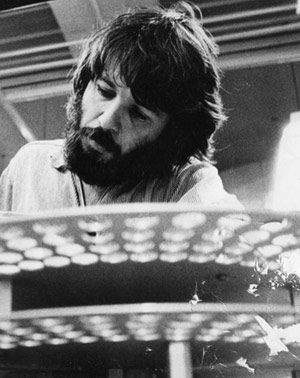Original Thinkers
Harry Noller: uncovering one of life's essential molecular machines
 In the early 1970s, Harry Noller pursued a “crackpot idea.” In time, he was proven right.
In the early 1970s, Harry Noller pursued a “crackpot idea.” In time, he was proven right.
Noller, the Sinsheimer Professor of Molecular Biology at UC Santa Cruz, believed RNA (DNA’s less famous molecular cousin) performs crucial protein-building actions in all cells. He has devoted his career to studying the ribosome, a molecular machine essential to all life. Made of long chains of RNA and proteins, ribosomes translate genetic code into proteins. Noller focused on ribosomal RNA as the key component for carrying out protein synthesis, and he recalls one outraged scientist becoming red in the face at the very notion of RNA playing an important functional role.
“It was a completely heterodox view when we first proposed it, but it is now the accepted paradigm,” said Noller, who directs the Center for Molecular Biology of RNA at UCSC. Studies carried out in his lab determined the crystal structure of the ribosome (the largest 3-dimensional molecular structure ever described) and confirmed that RNA components are central to its function.
There are important practical reasons for studying the ribosome. Many of the most effective antibiotics work by targeting bacterial ribosomes, and findings by Noller and others have led to the development of novel antibiotics. Understanding the functional role of ribosomal RNA also provided a basis for ideas about the central role of RNA in the origin of life on Earth (the “RNA World” hypothesis).
Noller, who came to UC Santa Cruz in 1968, said the atmosphere on campus was liberating. “There were not a lot of ‘experts’ around to discourage you from going in unusual directions,” he wrote in an entertaining essay on his career published in the Journal of Biological Chemistry in 2013.
Related Links
- Reflections: By Ribosome Possessed
- Researchers probe the machinery of cellular protein factories
- Study reveals key step in protein synthesis